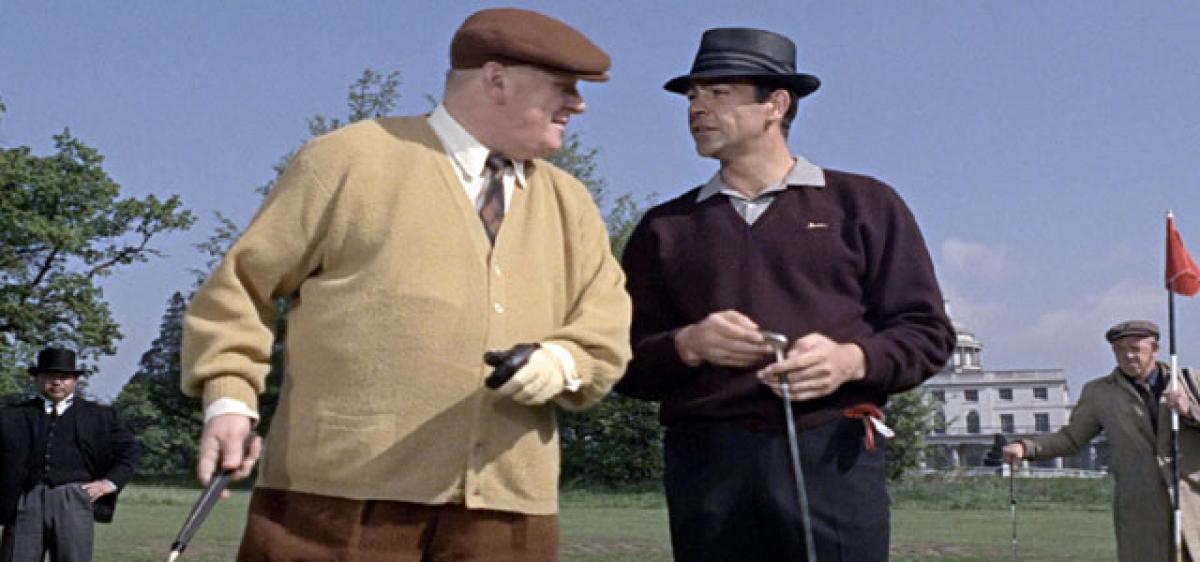Literary links

Involving traversing fairways bounded by roughs and hazards for the unwary, a progressive set of goals to achieve through varying levels of difficulty, and performers of varying calibre and skill, golf might be the sport most approximating our life. But strangely, golf\'s appearances in fiction have not been commensurate with the resemblance – though it has not been entirely absent.
A round of golf through popular literature
Involving traversing fairways bounded by roughs and hazards for the unwary, a progressive set of goals to achieve through varying levels of difficulty, and performers of varying calibre and skill, golf might be the sport most approximating our life. But strangely, golf's appearances in fiction have not been commensurate with the resemblance – though it has not been entirely absent.
A game of golf, or even a course, can be seen in some masterpieces of popular literature, stretching from a puzzling case of the Dame of Crime's Belgian detective to a brace of stories by the English language's funniest writer to the world's best-known spy taking measure of another of his egregious adversaries in one of his exploits. Let’s explore these and more.
Possibly the first work with a golfing background was Chester K Steele's ‘The Golf Course Mystery’ (1919). From the Stratemeyer Syndicate – producer of series like Nancy Drew, the Hardy Boys, the Bobbsey Twins – the "Steele" (an in-house pseudonym) series was intended for slightly more mature readers.
This, the third (and the second with reluctant detective Col Ashley, who would rather be fishing than solving murders), deals with two men who are friendly rivals for a woman, despite one being hampered by the fact that her father is cool towards him as the boy's family pipped him in a business deal. But when the father drops dead in the middle of a golf match, is found to be poisoned, and this suitor is a suspect, Ashley must intervene.
Golf figures in the second outing of Agatha Christie's Hercule Poirot. In ‘The Murders on the Links’ (1923), Poirot and his friend, Capt Hastings, are urgently summoned to north France but reach the man's house to find he was murdered that morning -- the body was placed in an open grave on an adjacent golf course.
This, however, happens to be the extent of the story's connection to the sport, but prolific Scottish author Angus MacVicar (1908-2001) weaves it in his crime thrillers, a genre he was as successful in as science fiction and autobiographical works.
Out of these, an outstanding example is ‘Murder at the Open’ where MacVicar places himself as the narrator, a sort of Dr Watson to his friend Aidan Campbell, a professor of literature with an inclination to solve mysteries and as quirky as Sherlock Holmes himself.
The two friends are at the legendary St Andrews during the 1964 Open Championship but their hopes of a relaxing week of playing and watching golf end after they find the body of an American millionaire buried in a bunker. Golf and mystery combine perfectly in this tale set when American golfer Tony Lema won that year's title in his first major victory (two years before his untimely death aged 32).
With the hedonistic lifestyle they depict, golf should be a sure thing for Ian Flemings' James Bond – and it does appear in the seventh installment ‘Goldfinger’ (1959). Bond, who exposes businessman Goldfinger cheating at cards and then finds he has to investigate his activities, contrives to have a game of golf with him – and cheats more successfully than him to win it.
The match, whose description spans two chapters, has some classic Fleming lines: "The difference between a good golf shot and a bad one is the same difference between a beautiful and a plain woman – a matter of millimetres."
Then Florentyna Kane learns she has become the first woman US President while playing golf with an old school friend in the climax of Jeffrey Archer's ‘The Prodigal Daughter’ (1982) while a game – in more sense than one – between two friends-turned-enemies-turned friends can also be found in ‘The Loophole’ from his short story collection ‘A Twist in the Tale’ (1988).
But no one can beat PG Wodehouse when it comes to depicting the sport with humour. His 26 golf stories, mostly collected in ‘The Clicking of Cuthbert’ (1922) and ‘The Heart of a Goof’ (1926), have the Oldest Member telling his willing – or mostly unwilling audience – stories about golfers: capable and incompetent, feckless and persevering, dour and talkative and of love and careers won or lost on the greens.
Wodehouse is at his funniest best when describing indifferent golfers – in one story he catalogues examples of "every nightmare style that was ever invented", including the man "attempting to deceive the ball and lull it into a false security by looking away from it and then making a lightning slash in the apparent hope of catching it off its guard", the man brooding "over each shot like one whose heart is bowed down by bad news from home", and the one "who scooped with his mashie as if he were ladling soup".
And there is ‘The Wrecking Crew’ comprising ‘The First Grave Digger’, ‘The Man with the Hoe’, ‘Old Father Time’, and ‘Consul, the Almost Human’ (referring to a circus chimpanzee of the time). Tee off with these.














